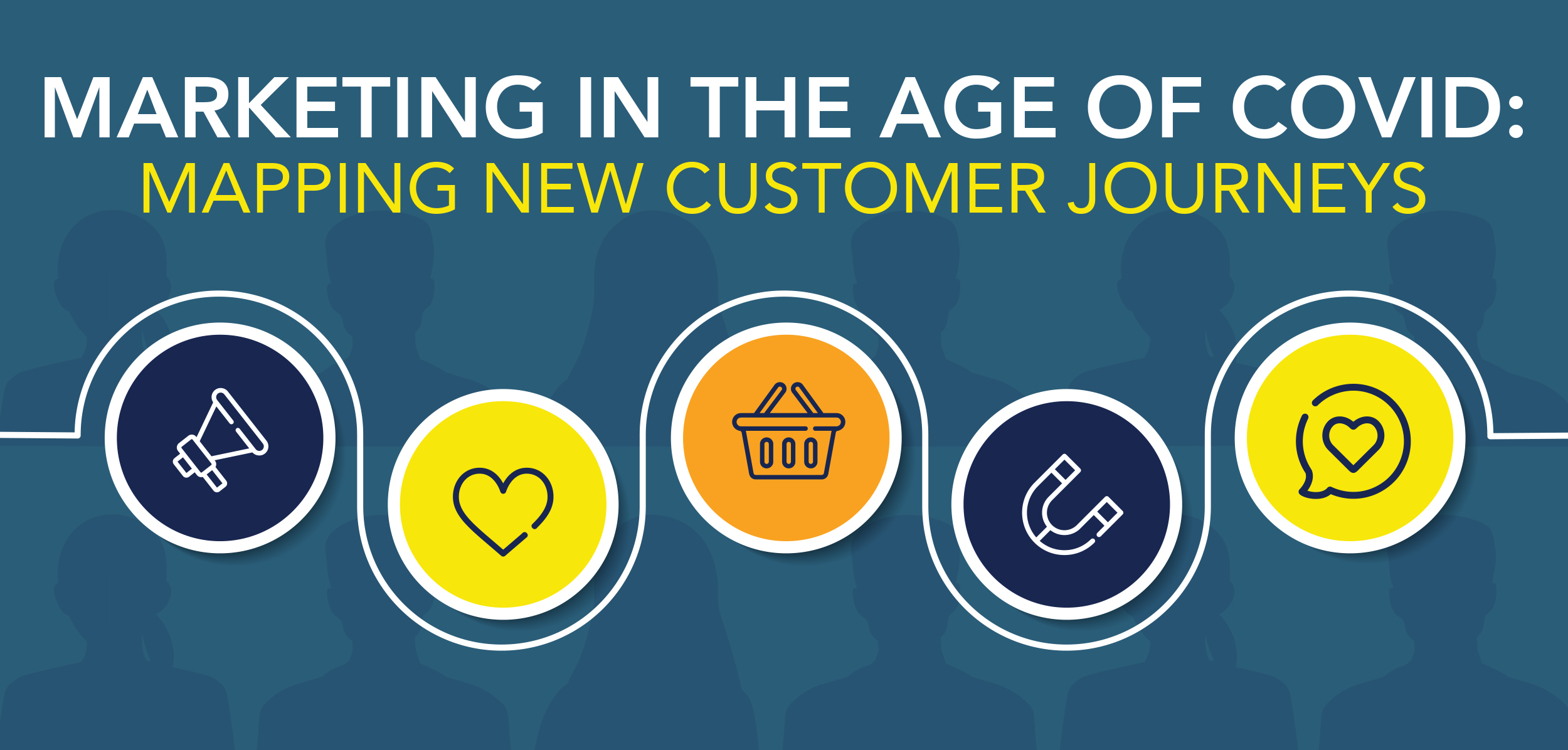
Marketing in the age of COVID: Mapping new customer journeys
Posted on April 9, 2021
-
Category:
- Atlanta Marketing
Because of the pandemic, the customer journey has changed. Before the arrival of COVID-19, we could do most of our shopping offline. When we made a trip to a retailer, we did so in person, but a year later, the pandemic has forced our shopping habits to change. Retail stores are incorporating digital services for the first time—or strengthening those they already have—because they recognize that touchless contact means safer conditions for everyone.
But how do successful businesses reach their customers now that visiting a brick-and-mortar storefront is no longer a given?
They follow the four steps of the customer journey:
- Awareness. Know how potential customers become aware of your brand. Are they researching a product or service online? If so, are they using Google? Watching a YouTube video? Seeking recommendations on Facebook or Twitter? All of these channels have become more popular, even as billboards are less so. Television seems to be doing well, especially with more people staying home. Podcasts are radio reinvented, and audiobooks and e-readers have replaced hardcopy books.
- Interest. Learn the specifics of what consumers are looking for and what they’re buying. Educate yourself about the problems they’re facing and how you can help solve them. Become an expert in your field. Demonstrate your knowledge through easily accessible articles, blogs, newsletters, podcasts, virtual events/inspections, or videos on popular platforms like YouTube, Facebook, Twitter, Instagram, LinkedIn, and Clubhouse. Remember, content is what leads customers to decide what to buy.
- Decision. Based on the expertise you’ve demonstrated through your content, the prospective customer has decided that your business is qualified to provide the solutions they’re looking for. However, you may be one of several qualified candidates, so don’t ignore the power of positive—or negative—customer reviews. Continue educating your audience about the products or services that are unique to your brand. Education is key. So is persistence.
- Action. The customer journey has reached its last step. Now that you’ve captured their interest, provided educational content, and demonstrated your ability to meet their needs, prospective customers are ready to engage with your brand directly and take action—for instance, booking an appointment or making a purchase. And forward-thinking business owners will make taking an action as convenient as possible for their customers. For instance, shoppers may have gone to the grocery in the past, but now, many of them prefer to order online using an app and have their purchases delivered within hours—and that convenience is yours to market.
Don’t forget the basics of prompting an action. The process of conversion may be virtual, but that shouldn’t make it any less urgent. Create urgency with discounts that will expire soon or other limited-time offers.
Although the coronavirus vaccine has some people feeling safe enough to shop in person again, the practice of doing business has changed because the customer journey has changed. Brands have the tools they need to reinvent themselves and prepare for a successful future. Those that understand their customers’ needs well will survive. Those who understand them better will thrive.
Badie Designs helps clients in many industries create successful marketing and design strategies. Contact us today for a consultation.
